Poisonous Plants in Ohio
 As April showers bring May flowers, we thought it might be helpful to highlight some of Ohio's poisonous plants in our blog. Some of them you may know and some you may not, but they are all right here in Ohio.
As April showers bring May flowers, we thought it might be helpful to highlight some of Ohio's poisonous plants in our blog. Some of them you may know and some you may not, but they are all right here in Ohio.
Since it can be hard to recognize these plants while you are hiking or gardening, it is always a safe bet to cover your arms and legs if exposed to the brush. Or, if you are working in the garden or landscaping, be sure to wear gloves.
Suppose you do come in contact with a poisonous plant, like poison ivy or poison sumac. In that case, you can always visit one of our Urgent Care locations in Sandusky or Clyde, contact one of our virtual care providers, or, if needed, visit the nearest emergency department. If the rash from the plant spreads to a large part of your body (30-50%) or your face or genitals, and you have a high fever (over 101°F), it is essential to be checked out sooner than later. A doctor can prescribe oral or topical steroids to help reduce inflammation.
Call 911 or go to a hospital emergency room immediately if your eyes swell shut or you have difficulty breathing.
Visual Guide to the Top 5 Poisonous Plants in Ohio
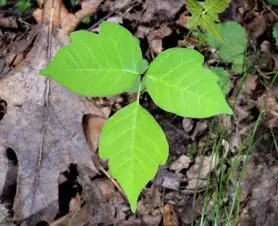 1. Poison ivy (Toxicodendron radicans or Rhus radicans)
1. Poison ivy (Toxicodendron radicans or Rhus radicans)
Poison ivy is widespread throughout Ohio. You can recognize poison ivy by its shiny leaves that are composed of three leaflets. Each mature leaflet is 2 to 4 inches long and has smooth, lobed, or toothed margins. Poison ivy grows as a vine but sometimes becomes shrub-like. It proliferates in USDA zones 5 through 10 and can be found along roads, in fields, at the base of trees, and along the edges of wooded areas. Poison ivy propagates mostly by seed: it produces seeds within small, white berries that are spread by birds and animals. Poison ivy releases an oil called "urushiol" when bruised or crushed, which causes severe swelling, blistering, and itching upon contact with the skin of susceptible people. Even the inhaled smoke from burning poison ivy can produce an extremely painful reaction in the lungs. All parts of the poison ivy plant contain urushiol and cause an allergic reaction.
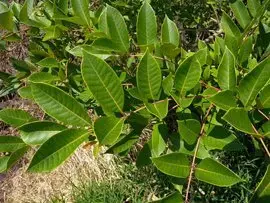 2. Poison sumac (Toxicodendron vernix)
2. Poison sumac (Toxicodendron vernix)
Poison sumac is a shrub with reddish stems that are often found in swamps, bogs, and fens. It has compound leaves with 7 to 13 leaflets on each blade. Other than the end-most leaflet, the remaining leaflets are arranged in pairs directly opposite each other. When Poison Sumac is young, its branches and stems are red. As it matures, the bark turns a speckled brownish gray. Poison Sumac grows into a large shrub or a small tree, varying between 6 and 18 feet in height. Since it’s deciduous, its leaves turn red in the autumn and then drop off. Like Poison Ivy it has green to white berries that persist into winter, drooping in clusters from its branches. Poison sumac has the unique distinction of being the most toxic plant in the United States.
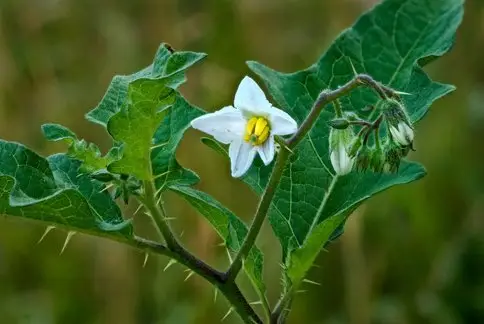 3. Horsenettle (Solanum carolinense)
3. Horsenettle (Solanum carolinense)
Horsenettle is a 1- to 4-foot-tall weed that grows in all counties of Ohio. It prefers sandy or gravelly soils and grows in fields, pastures and along roadsides. Horsenettle belongs to the nightshade family of plants and bears yellow fruits that look like small yellow tomatoes. It grows in USDA zones 4 through 10. Horsenettle, if eaten in large quantities, is poisonous to livestock. It contains an alkaloid compound that becomes activated in the stomach when the plant is eaten. Young children may be attracted to the yellow berries, which can lead to death upon digestion.
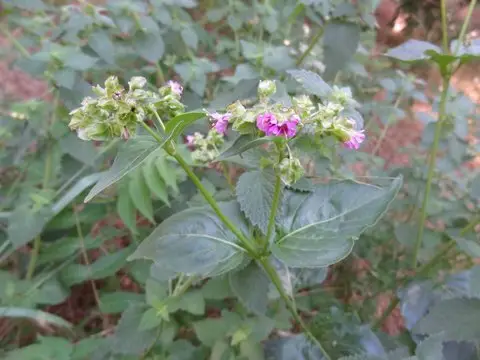 4. Wild four-o'clock (Mirabilis Nyctaginaceae)
4. Wild four-o'clock (Mirabilis Nyctaginaceae)
Wild four-o'clock is becoming more widespread in Ohio. It grows in USDA zones 3 through 10 in pastures, gardens, and waste landscapes. Wild four o'clock also invades no-till crop fields. It is a bushy perennial, 1- to 4-foot-tall plant with a tap root, swollen joints, and heart-shaped leaves. The seeds and roots of wild four-o'clock are toxic because they contain an alkaloid that can cause gastrointestinal distress. Some animals appear to be able to eat the weed without ill effects.
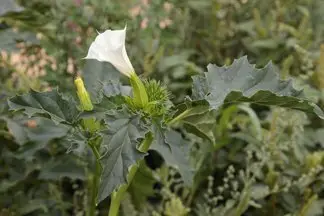 5. Jimsonweed (Datura stramonium)
5. Jimsonweed (Datura stramonium)
Jimsonweed, also called Jamestown weed or thorn apple, is a 2- to 5-foot-tall annual plant. It thrives in USDA zones 7 through 11, but will also grow down to zone 3. Jimsonweed prefers rich soil and cultivated fields but will also grow in wastelands. Jimsonweed contains a toxic alkaloid and all parts of the plant are poisonous. Normally, animals avoid eating Jimsonweed because of its unpleasant odor and taste, but hungry animals will eat it. Convulsions, coma, and death in farm animals are preceded by early signs of poisoning, such as rapid pulse and nervousness.